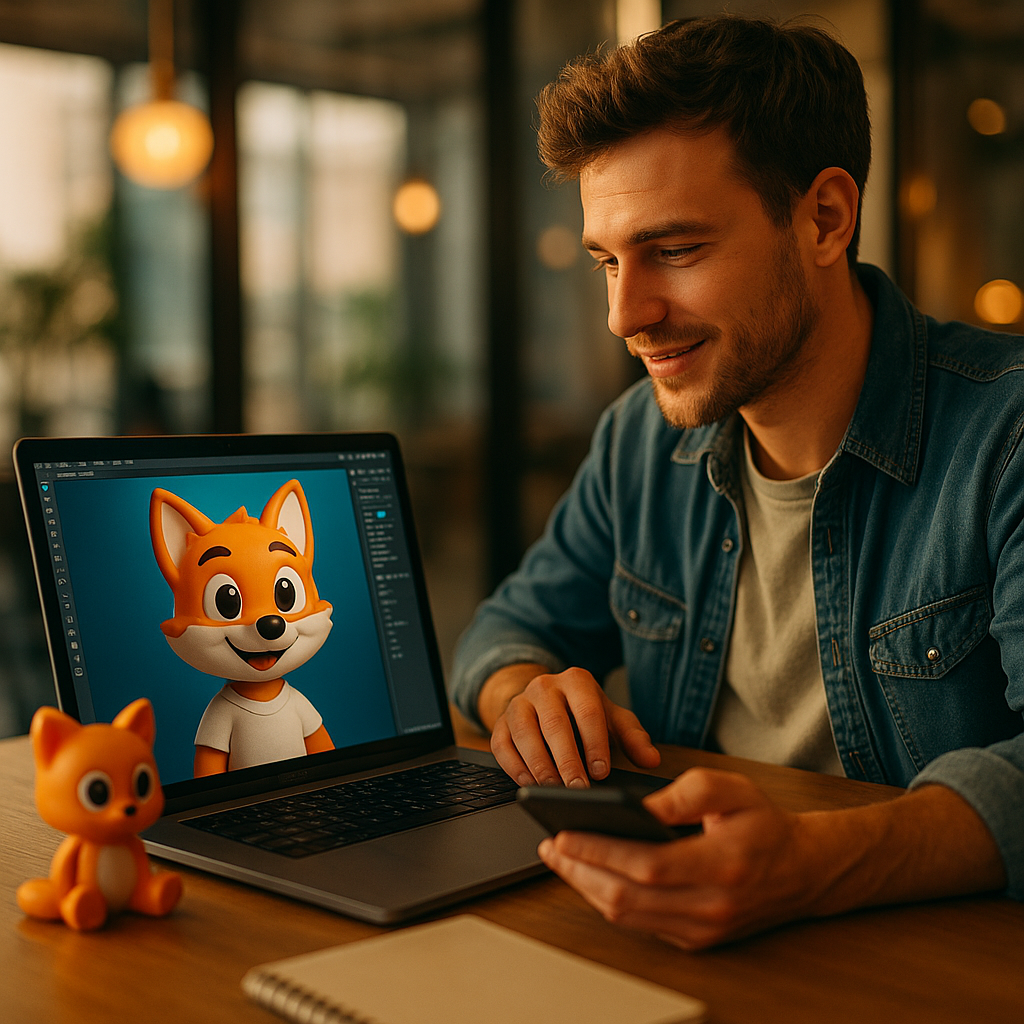The future of brand mascots in a digital-first world is rapidly evolving as brands adapt to fast-changing technologies and shifting consumer expectations. Mascots are no longer just TV commercial icons; they’re interactive, data-driven personalities central to digital brand strategies. How can brands leverage mascots for maximum impact in this new landscape? Let’s explore the possibilities.
Brand Engagement: The Evolving Role of Digital Brand Mascots
In 2025, digital-first audiences demand personalization and immediacy, making the digital presence of brand mascots more critical than ever. Brands have shifted from static mascot images to dynamic, responsive characters who interact across websites, apps, and social media platforms. According to a 2024 Interbrand report, campaigns using interactive mascots saw up to a 28% increase in customer engagement, indicating that digital personas can deepen brand relationships.
Enhanced engagement stems from the ability of mascots to humanize complex digital platforms. When audiences encounter a familiar, friendly figure as a chatbot avatar or in gamified brand content, they are more likely to remember and trust the experience. Brands that personalize these interactions—adapting tone, style, and actions in real-time—see higher retention rates and customer loyalty.
AI-Powered Mascots: Personalization and Automation
Artificial intelligence has transformed mascots from passive icons into intelligent brand ambassadors. AI-powered mascots can analyze consumer data to offer real-time, personalized recommendations, troubleshooting, or even conduct interactive storytelling. A 2025 Gartner research brief found that businesses using AI-enhanced mascots in customer support chats reduced resolution times by 35%.
These mascots can also automate repetitive interactions, decreasing workload on human agents while maintaining a consistent, branded voice. Advanced natural language processing enables mascots to engage in nuanced conversations, detect customer sentiment, and provide adaptive responses tailored to individual users. As a result, brands build stronger emotional connections, leading to increased conversion and loyalty.
Social Media Mascots: Building Brand Identity and Community
Social platforms have become the primary battleground for brand visibility in a digital-first world. Mascots play a pivotal role in cutting through the noise with rich, shareable content, relatable humor, and trend-savvy commentary. For instance, Wendy’s AI-driven mascot, which debuted in early 2025, amassed over 3 million followers within four months by leveraging real-time cultural moments and direct interactions with fans.
Successful social media mascots are more than spokescharacters—they are brand storytellers and community builders. They host live streams, participate in memes, and invite user-generated content through branded challenges. Brands that empower their mascots with a distinctive voice can deliver sustained engagement and viral reach far beyond traditional marketing.
Immersive Experiences: Mascots in Augmented and Virtual Reality
As AR and VR adoption grows, mascots are becoming important players in immersive marketing experiences. In 2025, brands are integrating mascots into interactive product demonstrations, branded mini-games, and virtual customer service. According to Statista, 62% of Gen Z consumers reported greater brand affinity after engaging with mascots in AR campaigns.
These experiences allow users to interact physically and emotionally with brand mascots, deepening their sense of loyalty. AR mascots can guide customers through real-world environments, while VR characters provide companionship and entertainment in branded virtual spaces. Brands that invest in these technologies enhance customer retention and collect valuable behavioral insights, further refining mascot strategies.
Ethical and Inclusive Mascot Design in the Digital Era
The digital transformation of mascots brings new responsibilities. Today’s audiences are diverse and socially conscious, quickly rejecting mascots that perpetuate stereotypes or lack representation. Brands must focus on creating mascots that embrace inclusivity, reflect a variety of backgrounds, and avoid harmful clichés.
Ethical AI development ensures mascots interact respectfully and protect user privacy. Transparency about data usage and behavior builds consumer trust, especially when mascots serve as the face of customer service or branded apps. Thoughtful mascot design considers accessibility—for example, offering voice guidance for visually impaired users or sign language animations—maximizing reach and goodwill.
Maximizing Business Value: Future-Ready Mascot Strategies
Future-proofing brand mascots means integrating them seamlessly across touchpoints and measuring their impact. Use robust analytics to monitor mascot performance, testing different personalities, tones, and engagement tactics. Collaborate with digital artists, AI developers, and community managers to build mascots that evolve with technological and cultural shifts.
Moreover, licensing opportunities and digital collectibles—such as NFT mascots or exclusive AR skins—unlock new revenue streams and loyalty drivers. Brands should survey customers regularly to ensure mascot relevance and encourage user co-creation. The brands most successful in 2025 will be those whose mascots serve as adaptive, authentic brand ambassadors delivering measurable ROI.
FAQs: The Future of Brand Mascots in a Digital-First World
-
How do digital mascots improve customer engagement?
Digital mascots provide interactive, personalized experiences across platforms, increasing audience retention, sentiment, and brand recall. AI-powered mascots can answer questions, guide users, and create unique content interactions, leading to deeper relationships and advocacy.
-
What platforms are best for launching digital mascots in 2025?
Social media (Instagram, TikTok, X), brand mobile apps, AR/VR applications, and customer support chatbots offer the highest engagement. The key is a strong content strategy and cross-platform integration for consistent brand experience.
-
Are there risks with AI-powered mascots?
Yes, potential risks include privacy concerns, algorithmic bias, and miscommunication. Brands must ensure ethical AI development, train mascots on respectful behaviors, and be transparent with data usage to maintain consumer trust.
-
How can mascots support inclusivity?
By reflecting diverse communities in design, voice, and accessibility features. Inclusive mascots may offer multilingual support, represent various backgrounds, and integrate with accessibility tools, ensuring all customers feel represented and valued.
-
Will brand mascots remain relevant in the future?
Absolutely. As technology continues to advance, brand mascots will adapt, becoming even more central to digital strategy, community engagement, and multi-channel brand storytelling.
The future of brand mascots in a digital-first world relies on innovation, ethical design, and immersive technology. By evolving mascots into interactive, inclusive digital personalities, brands can build deeper connections and stronger business outcomes. Invest in adaptive mascot strategies to ensure your brand thrives in tomorrow’s marketplace.
